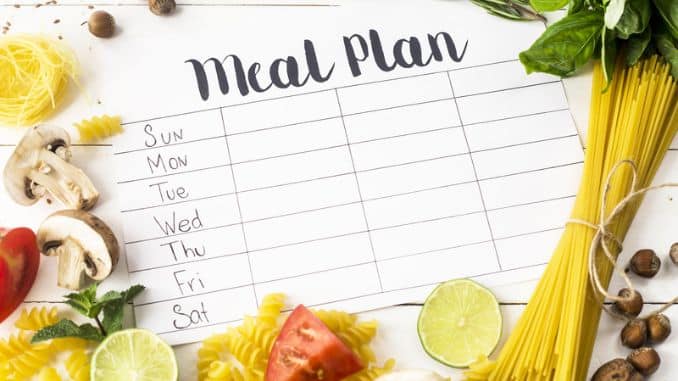It can be difficult to stretch every last dollar when the economy is tough. Even with careful budgeting and frugal habits, many people find their expenses constantly creep up on them. There are creative ways to reduce expenses without making you feel like you’re living a lesser life. With creativity, you can cut your expenses without cutting into your lifestyle.
There are always ways to reduce expenses, whether you’re on a budget or not. One of the most common ways is to adjust your daily routine. For example, if you normally order takeout for lunch, try packing a sandwich instead. Or if you always buy your coffee at Starbucks, try brewing some yourself. These simple changes can save money and help you stay more organized throughout the week.
You can also try sharing meals with friends or coworkers to save even more money. Not only will this save you money on food expenses, but it will also save you time by allowing you to be in two places at once.
In addition to making small adjustments to your daily routine, there are other creative ways to reduce your expenses. For example, if you’re paying by cashier’s check instead of cash, look into getting an online account to deposit your pay directly into your account. This way, all of your bills are automatically paid when you get paid.
Another way to save money is to stop using plastic whenever possible. Using a debit card instead of a credit card or cash whenever possible will help keep your spending under control and diminish the amount of plastic in landfills yearly.
If you have a savings goal or debt and want to put more money towards your debt, you can cut back on your household or personal expenses. Here are some tips for reducing your expenses so that you have more money at the end of the day.

1. Consolidating your Debt
Some interest rates on credit cards can be hard to bear. When you have even one debt or multiple credit card debts, approaching your bank to see if you could sort of rope those debts into one is a quick and simple way to reduce your interest. There are balance transfer credit cards that can be used to pay off the debt in a lump sum, but make sure to read the fine print if there is one, as doing so can also be risky. Do that with caution, but if you have multiple forms of debt, you might consider consolidating them, finding a lower interest rate, and simply paying them down.
It is also important to ensure that your credit report is accurate and up-to-date, as this will help you get better interest rates when you are ready to take on a new form of debt. You can have a healthy financial future if you stay disciplined and focused.

2. Switching Service Provider
Sometimes an easy way to do it is to jot down every single expense you have. Write down every bill that comes to mind—things you pay for. Consider looking for a service provider that has the same offering but for a lower rate. If you want to lower your phone/Internet bill, call your service provider and ask them if they have a new package you can take at a lower cost. Billshark is a company that caters to extremely busy people who do not have time to call these companies and wait on hold. They will negotiate the bills on your behalf. Billshark works by taking 50% of your savings upfront as payment if they save you money.
Make sure you are clear about what you want and expect. Also, make sure that you are speaking to the right person. You will be surprised at the results! You can also shop around for a provider who might be able to offer you a better deal. And you can look at comparison sites and see which suits you better. You can also ask your friends and family, who might have a recommendation.

3. Buy Used Goods
There are things like furniture, appliances, etc., that you can get an incredible deal on. When you have to purchase some things, like when something stops working, and you need to replace it, that cuts your household expenses. Consider going to Craig’s List or a Garage sale.
Garage sales often have things like clothes, furniture, and other household items that people no longer want because of a change in their situation. You can often find great deals on these sites, especially on things others have discarded. Go ahead and buy used items to cut your household expenses.

4. Meal Plan
A creative way to cut food costs in your household is to have a meal plan. The main issue with meal planning is figuring out how to make it work. There are a few ways to do it:
- Sit down and make a meal plan. If you go on something like Pinterest, you can find tons of templates that will walk you through exactly how to do that. But essentially, that means you’re making smart decisions about the food in your house and the food you will buy. You are making better decisions. You are going to cut your money down. You are ensuring that the food that you buy is used up. If you want to make your meal plan and need the inspiration to set it out and make a template, go on Pinterest meal plan templates and start meal planning. You will save so much money on food.
- If you can’t fathom making a meal plan or are just busy, you can also pay for services like a 5-dollar meal plan that sends meal plans to your inbox. You can also use an app called Flipp.com. They have amalgam flyers for everything you can imagine, so while creating a meal plan, you can make sure that you are picking the items in your area that are on sale. There is also a company called freshtwenty.com. Every week, they will send you meal plans in your inbox. But there is a caveat where they try to use some fresh 20 ingredients that reduce the groceries you need in your household, saving you money.
- Boxed food services are where you order the food, and they deliver it to you.
You can also save money by using the food you already have. You can use leftovers for lunch, for example. Or, if you have dried out, expired, or spoiled food that you don’t want to waste but doesn’t taste good, make a quick soup with other ingredients. Remember, whenever you are cooking, and a spark of creativity hits you, you can tweak it a little bit so it tastes great. You can also use fruits, vegetables, and grains that you already have in your fridge and pantry. The best part is you won’t have to buy any new ingredients!

5. Considering Generic Products
If you go to the grocery store, you will frequently see pain relievers such as Tylenol, which has its brand right beside the stall. When it comes to medications, there is always a generic version available. When you compare those labels side by side, it's often difficult to see the differences. You have to check that out for yourself. The prices are much lower. Some people get familiar with the brands and are reluctant to switch over to generic, but check it out or even try; it will make a big dent in your grocery bill in the right direction.
Generic drugs are just as effective as their brand-name counterparts but can cost up to 80% less. You would be surprised at the value and savings you can get from generic products, and it’s always recommended to try a generic brand before you rule it out. You can also sign up for savings cards, and you’ll get a certain percentage off at the register, like 5 to 10 percent, which adds up over time. These are just a few small things you can do to cut out some of your expenses and save money.

6. Evaluating Your Bank Fees
If you have an account or are paying a monthly fee for services, dig into what it’s offering you. Comb through those back fees. Look into your statements. Is there a monthly charge? In the case of your credit cards, are you paying annual credit card fees? There are a lot of no-fee credit cards. When you’re trying to reach a savings goal, pay off debt, or anything like that, it is just wasted money to pay for these fees, particularly if you’re not leveraging the services they provide. Look at every account for a monthly bank fee and find out what you’re paying for. If it’s not something you use, see if you have a free choice or option. Check out credit cards for annual fees. The two biggest things to pay attention to with your bank are two forms of interest:
- The interest that you are paying. Can you consolidate, or can you reduce that interest rate somehow?
- If you do have any form of savings, do you have a good interest rate? Check out to ensure you are also getting good interest on your savings.
It can be a little difficult to know what a good bank fee is and what a bad one is. The best way to know is to look at the fine print on your bank statement.
A fee may be an administrative charge, such as a monthly fee for maintaining our account, or a cost you never thought about.
There are many types of fees. A fee could be an annual or a charge for an account you don’t use or an account you no longer have. Find out what you’re paying for and ensure it’s an important service.

7. Dig Into Your Mortgage Payments
Many people don’t know there are many ways to speed that debt down quickly, and one of the simplest ways to do it is to pay that mortgage fee regularly. If you pay your mortgage bi-weekly, you pay more interest and make more monthly payments. It shrinks that loan, not only in terms of the time it will take to pay it back but also the interest. The tough thing with mortgage payments is that they are invisible if your payment stays the same. It is easy to shrug them off and go. But the truth is, it is a huge money saver.
If you have a fixed-rate mortgage, the rate is locked in. Your interest rate stays the same as you stay on top of your payments. This can save you thousands of dollars in interest over the life of your loan. If you have a variable-rate mortgage, you can save thousands of dollars in interest by locking in a fixed rate as soon as possible.

8. Pay Bills or Subscriptions Annually
If you have the option to pay your bills or subscription services annually or monthly, or if you can swing it and if it does not make you uncomfortable, then pay them annually. Some subscriptions can give you savings if you can pay annually. It’s about compounding those things over time, like making those decisions repeatedly.
If you’re looking for some short-term saving goal, you could consider the following:
- Getting rid of your gym membership and instead purchasing a product that allows you to do the program at home
- If you have a cable package, you could get rid of your television and cable package and then subscribe to something like Netflix, Who Lu, or Amazon.
- Switching to LED light bulbs in your home will help you save money on your energy bills.
- If you can leave your car at home and walk to your office or consider going down with one vehicle, do so.
While it’d be great to get rid of your monthly bills or at least put off paying them for a year, sometimes you have to do what feels right and good at the moment. The time you take to evaluate the different options will help you settle on one that you can manage.

9. Consider Capsule Wardrobes
Clothing can be a big expense when people go out and buy things. Essentially, you should pick only items that you can mix and match. Instead of wasting money buying everything, the capsule wardrobe concept will guide you through some essential items. It will reduce your clothing costs at the end of the day.
You can mix and match these clothes to create different outfits by sticking to one style in one color. By doing this, you can save a ton of money. It is one of the best ways to save money on clothing. You don’t have to spend much money on one shirt or pair of pants. Spend a little money on multiple shirts and pants and mix and match them. You can even find clothes at thrift stores or second-hand shops that you can mix and match.

Spending money on things we don’t need can be tempting, but these items are usually more expensive in the long run than buying used goods. Even if you don’t have a lot of extra money at the end of the month, you can still save money by making simple purchases that could impact your spending in the future.
If you have a lot of electronic equipment at home, consider switching to a different provider that offers a better rate. It’s also worth noting that you may end up saving a little bit each month as well. Here are some examples.
If you’re buying a car, consider buying a used one. You’ll save money in the long run, and you may even find that you can buy a newer version of the same model for less money than you would have paid for it new.
If you have children, you can also save money by taking advantage of the free or reduced-cost options many schools and daycare centers offer.
Even if you don’t have any debt, it can help to look for ways to save money. For example, if you normally purchase paper towels and toilet paper at the grocery store, you can save money by purchasing the same products from a bulk warehouse store.





